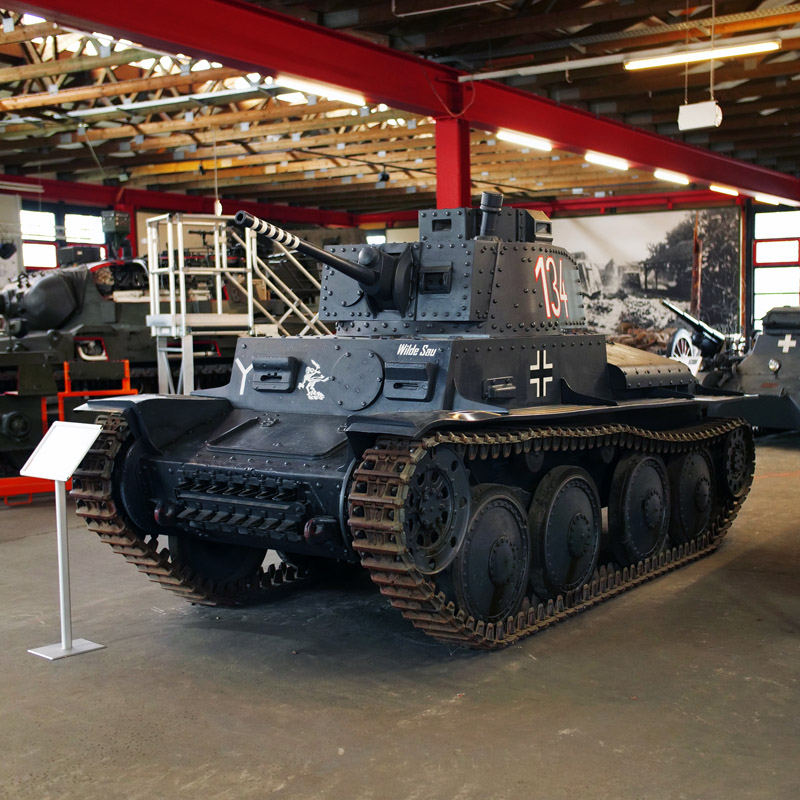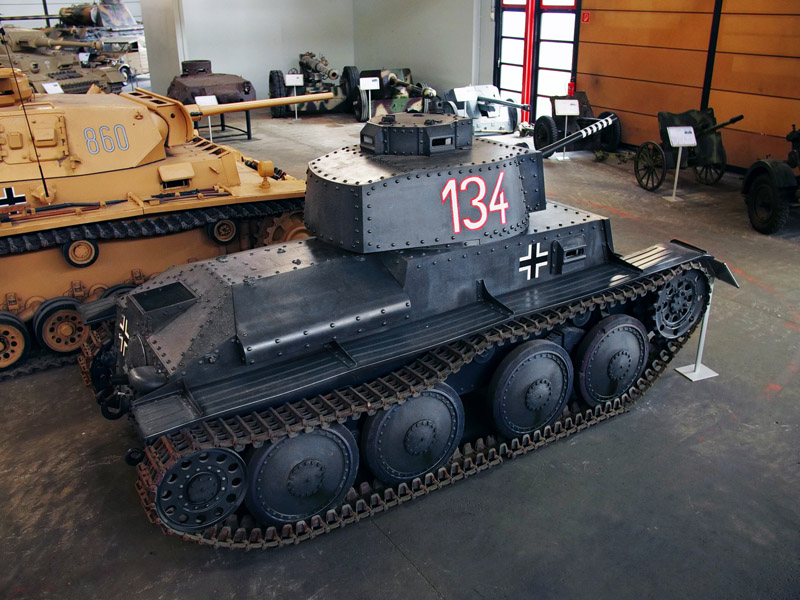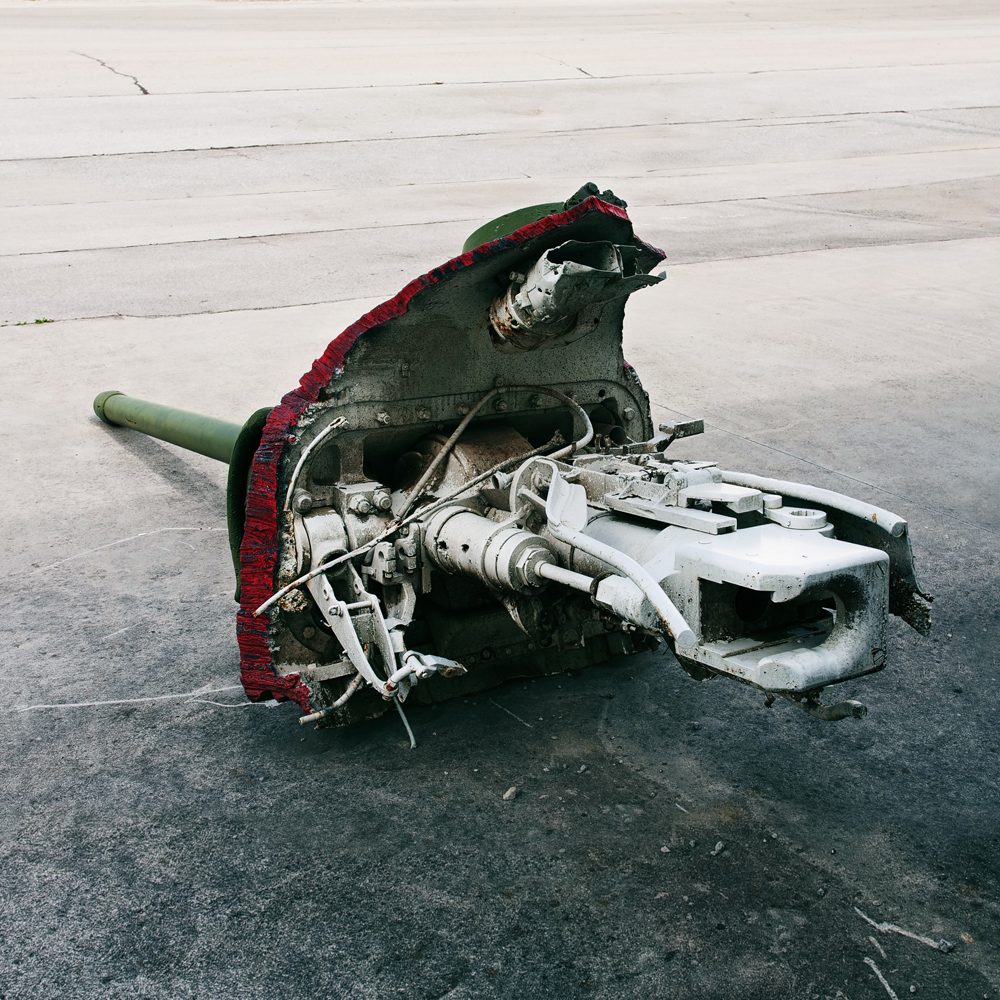Type: Light Tank
Nation: Czechoslovakia/Germany/Sweden
Period: World War 2
Location: Deutsches Panzermuseum Munster, Germany

When Nazi Germany annexed Czechoslovakia in 1938/1939, the engineering company ČKD in Prague had just completed the first ten vehicles of their new TNH model, which the Czechoslovak Army was calling „LT vz. 38“ (Lehký tank vzor 38 = light tank model 38). During evaluation trials, the Germans found the design to be superior to their Panzer Is and Panzer IIs and ordered the factory – now re-named “Böhmisch-Mährische Maschinenfabrik AG” – to continue producing the TNH for the Wehrmacht under the designation PzKpfw 38(t). The “t” stood for “tschechisch” (= Czech).
The 10.5-ton Panzer 38(t) would prove to be an effective tank for its time, although the old-fashioned riveted construction was a recipe for trouble: When hit, parts of the rivets could fly through the fighting compartment, injuring or killing one of the four crewmen inside. The small turret originally only had room for a commander, who also had to aim and fire the gun. The Germans however objected to impractical one-man turrets and thus crammed in an additional loader. The driver and bow gunner/radio operator sat next to each other in the hull. Interestingly, the driver’s position was located on the right side because Czechoslovakia had been a left-hand traffic country until 1939. They had in fact planned to switch to right-hand traffic later that year, but the Germans came first and ordered the change when they were taking over.

Only about 50 Panzer 38(t)s were participating in the 1939 invasion of Poland, but by the time of Operation Barbarossa (the invasion of the Soviet Union in 1941) their number had risen to over 700 – more than 20 percent of all German tanks on the Eastern Front. However, the superior Soviet KV-1s and T-34s soon rendered the Panzer 38(t)s and their 37 mm guns useless. In 1942 production was eventually stopped after approximately 1,400 units. The surviving vehicles were withdrawn from front-line service and from then on only deployed in quiet hinterland areas. But the proven and reliable Panzer 38(t) chassis was soon going to be recycled as the basis for other vehicles such as the Marder III and Jagdpanzer 38 “Hetzer” tank destroyers.
This particular vehicle was actually not built in Prague as it is a Swedish license-produced Stridsvagn m/41 SII. It has a slightly elongated hull due to its bigger engine. With its markings and grey colour the tank is supposed to resemble a Panzer 38(t) belonging to the German 7. Panzer-Division – Rommel’s “Ghost Division”, which had become well-known by playing a vital role in the 1940 invasion of France. “Wilde Sau” means “wild boar”. It is quite probably a command vehicle, since the bow machine gun port is covered by a round armour plate.


4 responses to “Panzerkampfwagen 38(t) (Sd.Kfz. 140)”
[…] for the Wehrmacht’s Panzer Divisions, which at the time mainly consisted of light Panzer IIs and Panzer 38(t)s. And although the Char B1’s World War 1 era all-around track layout and coil-spring suspension […]
LikeLike
[…] they experienced a nasty surprise. Their standard 3.7 cm anti-tank gun, for example mounted on the Panzer 38(t)s and early Panzer IIIs, infamously gained the nickname “Heeresanklopfgerät” (= army’s […]
LikeLike
[…] Panzer 38(t) – by this time obsolete as a gun tank – had already been used as the basis for the open-top […]
LikeLike
[…] Matilda Is (and 16 Matilda IIs) counter-attacked the Germans at Arras and temporarily delayed the 7th Panzer Division’s […]
LikeLike